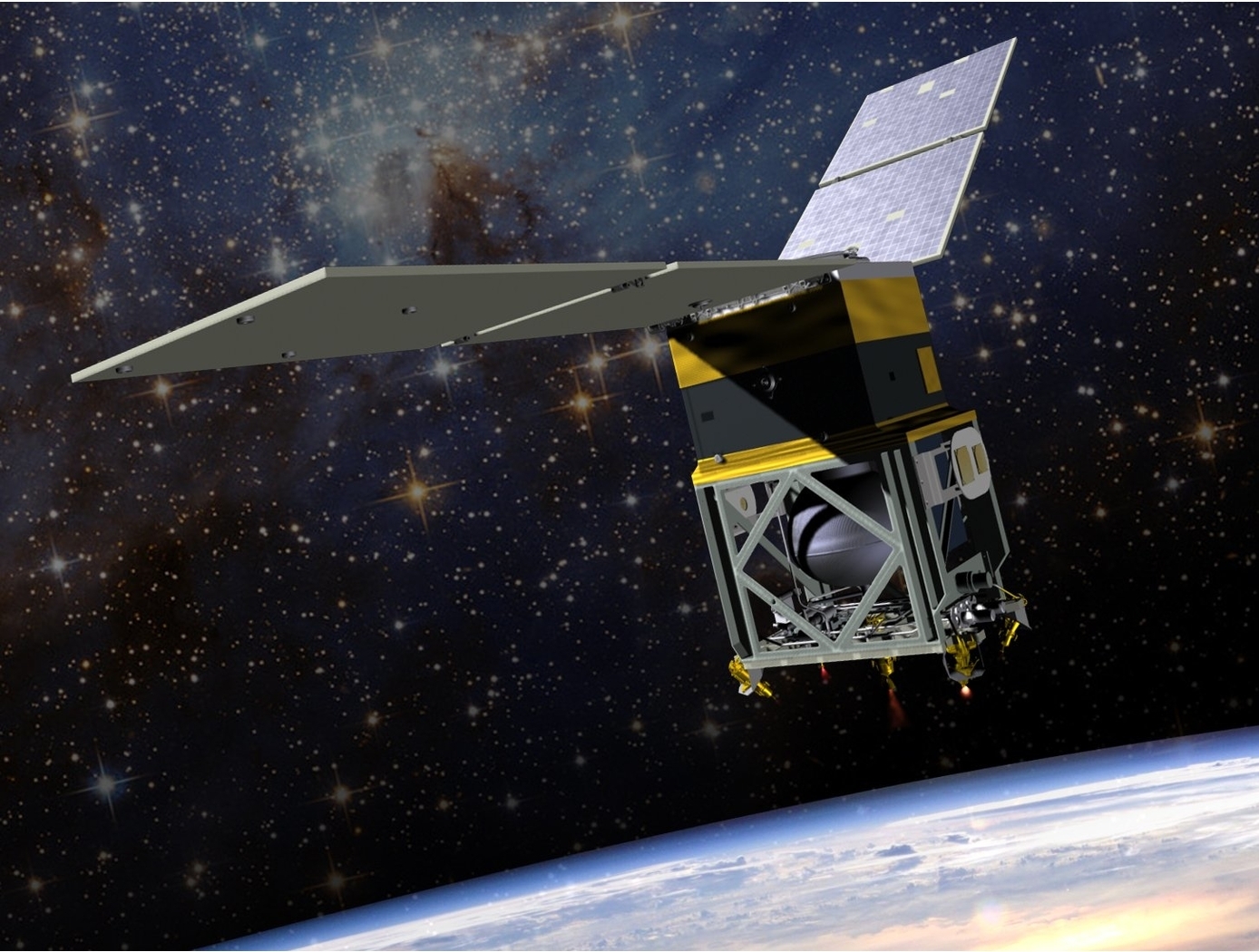Search
communications

Lightweight, Self-Deployable Helical Antenna
NASA's newly developed antenna is lightweight (at or below 2 grams), low volume (at or below 1.2 cm3), and low stowage thickness (approx. 0.7 mm), all while delivering high performance (at or above 10 dBi gain). The antenna includes a novel design-material combination in a helical coil conformation. The design allows the antenna to compress for stowage (e.g., satellite launch), then self-deploy at the desired time in orbit.
NASA's lightweight, self-deployable helical antenna can be integrated into a thin-film solar array (or other large deployable structures). Integrating antenna elements into deployable structures such as power generation arrays allows spacecraft designers to maximize the inherently limited resources (e.g., mass, volume, surface area) available in a small spacecraft. When used as a standalone (i.e., single antenna) setup, the the invention offers moderate advantages in terms of stowage thickness, volume, and mass. However, in applications that require antenna arrays, these advantages become multiplicative, resulting in the system offering the same or higher data rate performance while possessing a significantly reduced form factor.
Prototypes of NASA's self-deployable, helical antenna have been fabricated in S-band, X-band, and Ka-band, all of which exhibited high performance. The antenna may find application in SmallSat communications (in deep space and LEO), as well as cases where low mass and stowage volume are valued and high antenna gain is required.
Information Technology and Software

SpaceCube Mini Solid State Data Recorder (SSDR)
NASA's SpaceCube Mini SSDR is a 3.5”x3.5” card designed for use in CubeSats and SmallSats. The SSDR uses a radiation-tolerant field programmable gate array (FPGA) that interfaces with two independently controlled and powered banks of NAND Flash storage, providing up to 12 Terabits of storage capacity. The card includes multiple SpaceWire nodes and multi-gigabit transceivers for commanding and data transfer, various error prevention and correction mechanisms including Reed-Solomon encoding/decoding and data randomization schemes, and depacketizers/packetizers for handling data in CCSDS format.
This NASA technology is innovative in its combination of high reliability for harsh radiation environments (e.g., geostationary orbit, lunar orbit and surface, etc.) with high-speed data transfer capabilities (400+ MB/s write, 600+ MB/s read) in a compact form factor. The design allows for selective population of NAND Flash modules and independent control of memory banks, enabling power optimization through features like single-bank operation. The card integrates with a modular architecture system in which multiple CubeSat-sized cards (e.g., processors, GPS, etc.) can be mixed and matched to meet specific mission requirements. The SSDR card includes radiation-hardened voltage regulators to ensure safe operation in space environments.
The SSDR is ideal for small form factor satellites with some combination of the following requirements: (a) ability to store large amounts of data generated by high-performance detectors and sensors for extended durations (e.g., in environments without nearby relay capabilities), (b) ability to read and write data with high throughput, and (c) ability to operate in harsh radiation environments. It is fully compatible with NASA’s CubeSat Card Specification (CS2) and NASA’s SpaceCube v3.0 mini processing card, which is also available for licensing.



